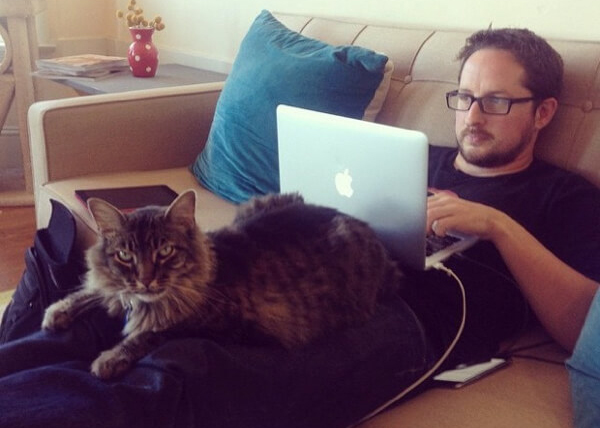Decoding Workplace Acronyms

As more and more "office" workers have begun working from home (or elsewhere), many conversations that would have previously taken place face-to-face have shifted to chat apps, like Slack and Microsoft Teams, and email. These cyberspace conversations are often littered with acronyms, which may save your teammates some typing time, but leave you in the dark about what they're saying.
In the interest of easing your frustration, and preventing you from going full headdesk, we've gathered up a gaggle of acronyms you're likely to encounter in work emails and chat channels. Now, when your co-workers use kewl acronyms, you'll be able to understand what they're saying and respond in kind.
1. EOD
When your boss wants you to finish something by EOD, you'd better get it done by "end of day." Relatedly, those who want you to finish a task in a specific timeframe may use COB to mean "close of business" and EOW to mean "end of week."
2. CIL
A co-worker who sends you CIL wants to "check in later." This might be because the co-worker is too busy to chat now, or because you're in trouble ...
3. IMO
IMO stands for "in my opinion." Your teammates might preface their take on a topic with IMO when sharing it in a chat channel. (Which is kind of pointless, given you already know it's their opinion.)
4. OMW
A co-worker who is in transit to the workplace or a meeting may use OMW to mean "on my way." Most likely, this co-worker is already late and/or typing while walking or driving, so they used OMW to save some time.
5. NWR
A message that's NWR is "not work related." For example, your BFAW might preface a question about your love life with NWR, to let you know you're in for a bit of a digression.
6. F2F
When a co-worker says you should meet F2F, it means they want to talk "face to face." Sometimes, a F2F meeting can be more helpful and efficient than a chat, phone, or video meeting. Also, some conversations are just better to have in-person ...

7. JK
Someone who is joking around with you might use JK to mean "just kidding." If you're chatting with a younger and/or immature co-worker, you might see this acronym expanded to JKLOL.
8. IDK
When your co-workers are in the dark or can't remember something, they might use IDK to stand for "I don't know." Alternatively, but less commonly, they might use IDR to mean "I don't remember."
9. CYA
CYA is a warning to "cover your a**," in case something you or a co-worker has done could come back to bite you. Relatedly, you might see CYOA used to mean "cover your own a**" and CMA used to mean "cover my a**."
10. GB2W
When a co-worker says they have to GB2W, it means they have to "get back to work." That means your chat conversation with them is likely over for now (and maybe you should get back to work, too).
11. PTO
PTO stands for "paid time off." Your co-workers might use this acronym when discussing paid vacation and sick time (usually, how little of it they have left).
12. SOP
SOP refers to a business's "standard operating procedure." Typically, you'll see this acronym used alongside descriptions of a standard process a business uses to complete a common task.

13. OT
OT has a couple possible meanings in work chat channels. Those discussing the fact that they have to work extra hours use OT to mean "overtime," while those who are taking a chat convo off on a tangent use OT to mean "off-topic."
14. TFLMK
TFLMK stands for "thanks for letting me know." A grateful teammate or manager might use this acronym after you've shared some pertinent information with them.
15. CYE
A co-worker who sends you CYE wants you to "check your email." Likely, they or someone else just sent you an important message, which you should read ASAP.
16. NSFW
You might be surprised to learn that NSFW stands for "not safe for work." After all, why would a co-worker send you a link that's not safe to click at work? Still, you should probably make sure no one else is around before clicking a link (or viewing a video or image) that a co-worker has labeled NSFW.
17. BRB
A co-worker who tells you they'll BRB will "be right back" to continue your conversation. Likely, this co-worker has to step AFK for awhile, possibly to take a BRB.
18. AOC
When someone is leaving their computer but will still be available by phone, they may use AOC to mean "available on cell." While you'll no longer be able to chat with this co-worker, you can call them if you really need them.

19. OOO
OOO is an abbreviation for "out of office." Your co-workers might use OOO when sharing their vacation plans or explaining why they need to leave early today. Relatedly, you might see LFD used to mean "left for day" and OOH used to mean "out of here."
20. POC
In the workplace, POC usually means "point of contact." Your co-workers might use this acronym when telling you who to reach out to about a particular issue. However, in some cases, POC may instead stand for "proof of concept," "people of color," or "piece of crap."
21. HR
HR typically refers to "Human Resources," the department that handles hiring, firing, compensation, benefits, and other employee management matters. For example, a co-worker might mention that they met with HR to change their insurance plan. However, hr is also a common abbreviation for "hour." Hopefully, context and capitalization will tell you which version of HR you've encountered.
22. IT
Your company's IT, or "Information Technology," department manages the company's computers and related technologies (such as apps and Internet access). Before calling them, you really should try turning your device off and on again.
23. TBD
TBD stands for "to be determined." If a meeting time, meeting place, assignment, or process is TBD, it means it has yet to be decided.
24. WFH
A co-worker who is going to "work from home" today may use WFH to say so. Co-workers discussing working from other locations may instead use the acronyms WFA, WFX, and WFP.

25. YTD
YTD, which stands for "year-to-date," describes the period from the start of the year to today. Businesses often use YTD when discussing the tasks they've accomplished and/or money they've made during the current year.
26. HBTU
When it's your birthday, your co-workers might use HBTU to say "happy birthday to you." In these instances, it's polite to respond with at least a brief TY.
27. NJ
If you receive NJ in a chat message, it means someone thinks you did a "nice job" on whatever task you're discussing. In a similar vein, co-workers praising others' accomplishments might use WD to mean "well done" and GJ to mean "good job."
28. PW
PW is shorthand for "password." You're most likely to encounter this abbreviation when a co-worker needs the password used to access a shared file, app, or other service.
29. FYI
FYI denotes that a message is "for your information." Your manager, HR department, and teammates might use FYI when telling you about meetings, new company policies, and the latest office gossip.
30. TCO
A task that is TCO is "taken care of." For example, if you're a mngr, your team members might use TCO to say they've finished a task you assigned.